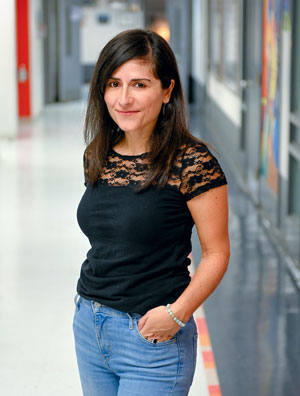This fall, Québec’s secondary school students are feeling great about being back at school. At École secondaire Henri-Bourassa, in Montréal, students are keen to make up for time lost during the pandemic, as demonstrated by their eagerness to take up positions in clubs and committees. Registrations have doubled with the Amnesty International group, and they have tripled with the Philosophy Club and the LGBTQ+ Committee.

“The committees are opportunities for young people not only to get involved but also to get the other students on board,” explains Mireille Hajjar. “This is directly linked to the school atmosphere and students’ sense of belonging to the school, which evaporated during the pandemic.”
The students’ enthusiasm has also spread to community projects. This year, 200 students registered for a visit to Moisson Montréal: twice as many as last year. “It’s a first for me!” says Mireille Hajjar, clearly delighted. “They sign up for everything, they want to do everything. They jump on any opportunity because they long for a social life. And a social life starts at school, through sports and extra-curricular activities.”
This kind of involvement enables young people to find meaning again, to explore a commitment to citizenship and to contribute to society. It’s as beneficial for students as it is for their community.
Being there for young people
The role of spiritual care and guidance and community involvement animators is a response to secondary school students’ huge need for belonging and self esteem. When the pandemic hit, students could no longer take part in extra-curricular activities or practise their sport, losing out on the social life they found at school.
To help young people during the crisis, Mireille Hajjar produced capsules about well-being with the school’s psychologists and psycho-educators. The goal is to help them manage their stress and encourage physical exercise. The animator also suggested a few ideas enabling students to decorate the classroom based on their tastes, a way of finding new perspectives.
And the outcome?
In Mireille Hajjar’s view, the students’ enthusiasm for community involvement will survive the pandemic. “The crisis affected many young people who did not experience their year in the way they should have. They were deprived of the things they loved. Now, they are taking up those opportunities once again. It’s the nature of youth to get involved!”
A more than necessary role
Many of today’s adults remember the spiritual guidance animator who worked at their secondary school. This job, which still existed in the early 2000s, transitioned into spiritual care and guidance and community involvement animator. It was also profoundly transformed.
There is no religious connotation in the description of the animators’ duties, says Mireille Hajjar. “We take care of spirituality, but in the sense of a student’s interior life: supporting the student in the construction of their identity, and who they are, their values and their strengths. We help them to discover their interior life and to learn to understand themselves in relation to others,” the animator explains.
Encouraging students to reflect, and to develop their critical thinking skills and their sense of belonging to their school and to their community are the fundamental components of the animators’ work.
Special discussions with the school’s students prompted Mireille Hajjar to organize events to foster “community life,” for example, in-class guest speakers talking about fat phobia and workshops about biases and stereotypes.
“Afterwards, the students want to talk to us about societal issues, the way they feel at secondary school, their self-esteem, their romantic relationships and their friendships,” says Mireille Hajjar.
By fostering students’ well-being at school, spiritual care and guidance and community involvement animators also encourage them to get involved in community organizations, to take action and engage proactively as citizens.
